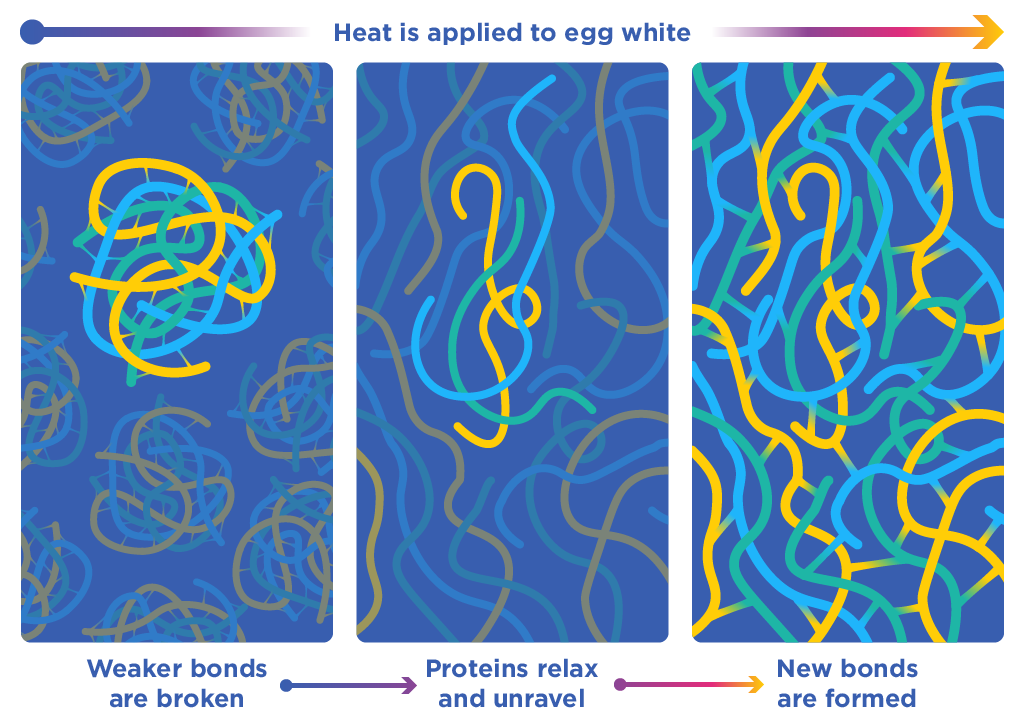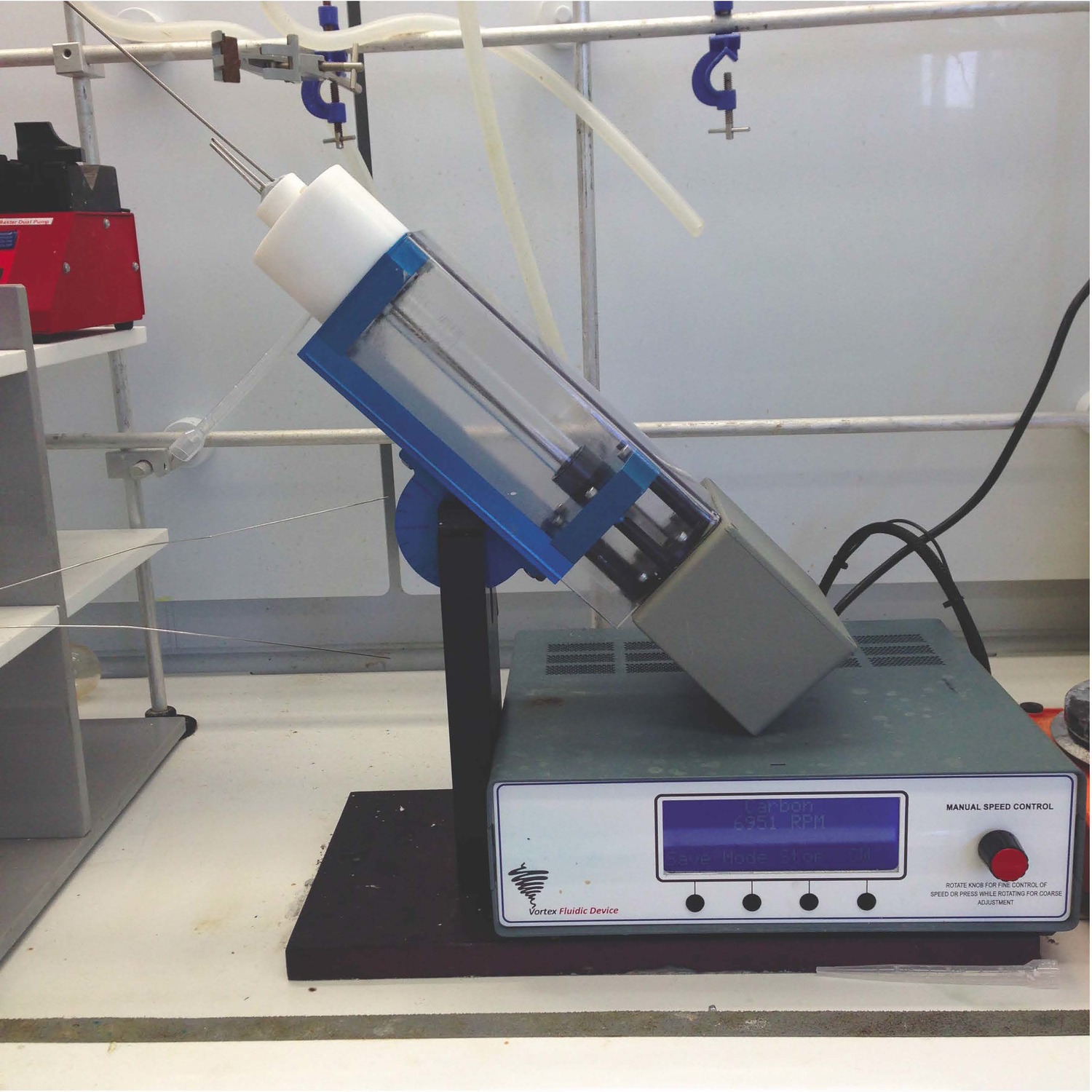How to Cook an Egg and Make It Raw Again
Have you always boiled an egg and wished you hadn't? It's the kind of thing that can ruin your day.
Thankfully, science is here to assistance. All you need is a handy invention called the Vortex Fluidic Device (VFD for brusk), a machine with a tube that can spin tiny amounts of liquids around at dizzying speeds and at precise angles. It was adult by a team of researchers led by Australian University of Scientific discipline Fellow Professor Colin Raston, and tin practise far more of import things than simply reversing your cooking: it can produce culling fuels more hands, create medicines more efficiently, chop upwards carbon nanotubes into prissy evenly-sized pieces, and loads more.
So how does it piece of work? Let'southward unboil our egg to detect out.
Pace one: Boil your egg
Prior to heating, egg whites consist of a lot of proteins that are all folded up in precise knot-like structures held together past weak chemic bonds. By boiling your egg, you lot're subjecting those neatly folded proteins to a lot of thermal energy, which breaks apart those weak bonds.
This gives the proteins freedom to movement around, bump up against their neighbouring proteins, and form brand new weak bonds in new places. As more and more of these new bonds are formed, the movements of those proteins become restricted, and the egg white gels into a solid tangled mass: a boiled egg.

Footstep 2: Add some h2o and urea
Next, you will need to transform that solid mass back into a mostly-liquid course. Chop up the egg whites, add some urea (which merely happens to exist a chemical found in urine, then these may not be very tasty eggs any more), and dissolve them in water. The urea helps to liquefy the solid egg whites and break downwards some of the bonds between the proteins.
You've cleaved your clumped-together proteins apart—but those proteins even so haven't been able to re-fold into their original shapes yet.
Step iii: Spin it really, really fast
Load your moisture, eggy mixture into the Vortex Fluidic Device and spin it at a speed of 5000 rotations per minute. This flings all that liquid to the sides of the glass tube at such great force, it spreads out into a very thin layer. The part of the solution that is closest to the wall spins faster than the solution that is closer to the middle. This difference in velocity between the different components of the solution creates shear stresses, causing those proteins to repeatedly stretch and contract, like pulling on a safe band, until they re-form into their original pre-boiled shapes.
Y'all take simply used mechanical energy to disengage what thermal energy did at the beginning. Nifty.
What else can it do?
Unboiling eggs was not the original intended goal for the Vortex Fluidic Device. It is used in the earth of thin film microfluidics and sparse film flow chemistry—in other words, manipulating liquids past spreading them out into a super-thin layer and keeping them moving continuously.
The device solves a lot of issues for scientists, usually by making things less wasteful, less expensive, easier and faster to do. It boasts an impressive (and growing) list of applications. Here are just a few examples:
Working with other proteins is fabricated easier and less wasteful: working with proteins tin be messy and fourth dimension-consuming. A lot of precious sample can exist lost when it gums upwardly test tubes with a solid, gunky mess, which can so take days to untangle. All the same, just like with egg whites, the VFD can recover virtually all the production and unfold information technology in a affair of minutes. This ways less waste matter and faster production in fields such as cancer antibiotic inquiry.
More efficient biofuel production: biodiesel is an alternative fuel made from renewable oils, such equally sunflower or vegetable oil, eliminating the need for over-exploited fossil fuels. Traditionally, producing the fuel required very high temperatures and some relatively harsh chemicals—and you wouldn't get much useable fuel from the process in the end. The VFD eliminates the need for those harsh chemicals and y'all will get a much bigger amount of useable fuel.
Chopping up carbon nanotubes for better solar panels: much like unfolded proteins, carbon nanotubes tend to become themselves into tangled messes, which are non very useful. Using the VFD, these tiny tubes tin exist sliced and diced with high precision into shorter pieces. These can be conductors or semi-conductors of electricity and tin be used to make better, thinner solar cells—so thin, in fact, that practically transparent sheets could be produced, which could turn a window into a functional solar panel for generating electricity.
More effective medicine production: a whole range of pharmaceutical compounds can be produced quickly and with loftier yields. Sometimes the effectiveness of the drugs themselves tin also be improved (compared to traditional production methods). For example, i treatment for a range of cancers was made more than potent, more than precisely targeted towards tumours, and produced fewer side effects.

The Vortex Fluidic Device is a tool for scientists to enable more efficient and less wasteful inquiry and production, then anyone with a habit of accidentally boiling eggs will most probable need to find another solution for their breakfast woes. Still, it is an heady slice of technology that volition go along yielding benefits for people and the planet well into the time to come.
mcconnellpece1947.blogspot.com
Source: https://www.science.org.au/curious/technology-future/how-and-why-unboil-egg
0 Response to "How to Cook an Egg and Make It Raw Again"
Post a Comment